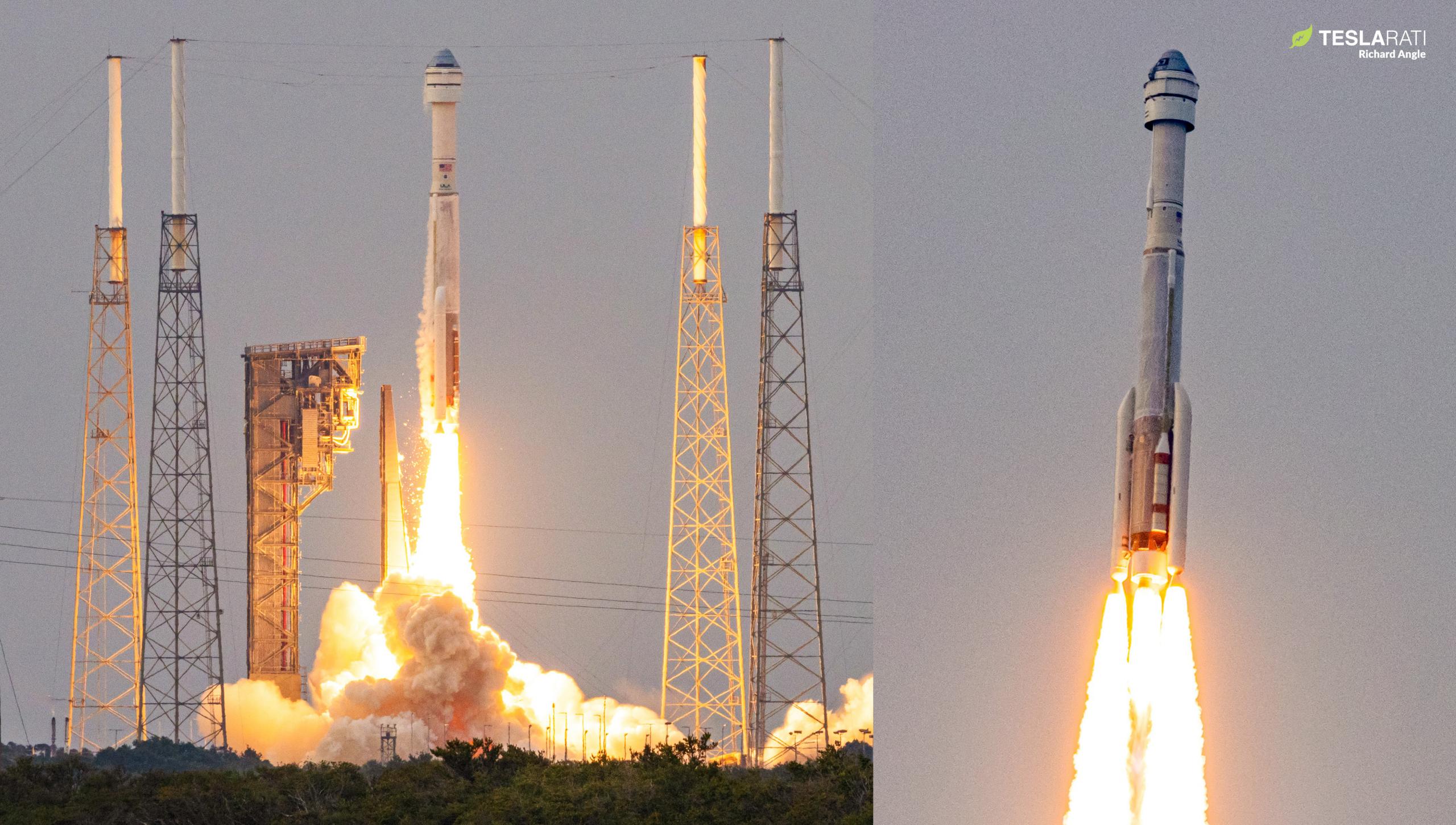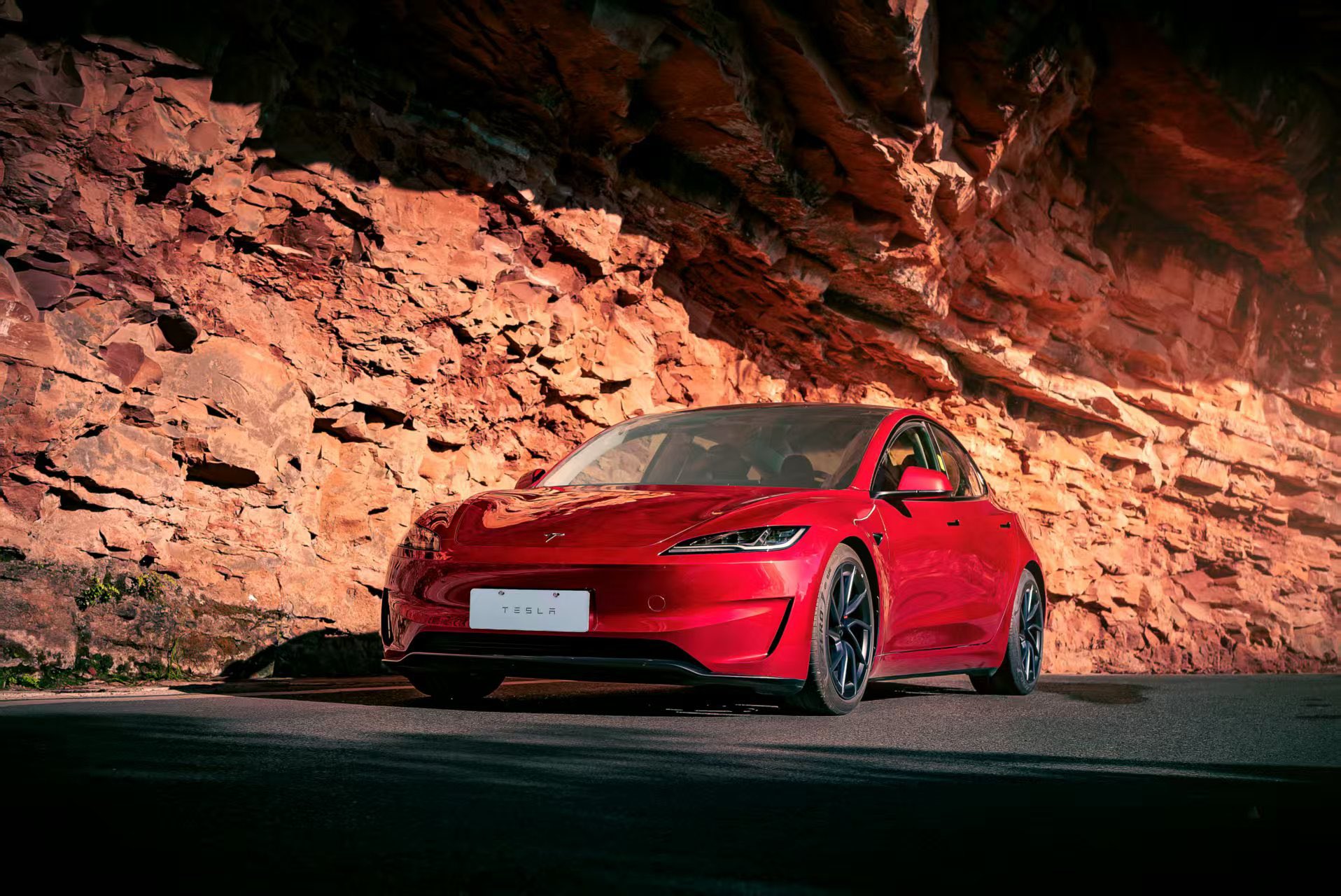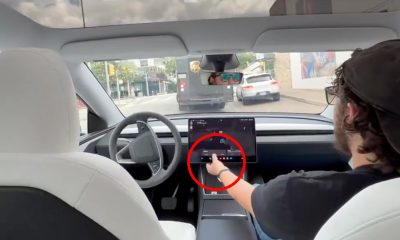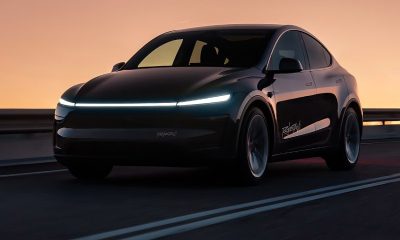

News
Boeing Starliner spacecraft successfully returns to flight 29 months after ill-fated debut
More than three years after SpaceX’s Crew Dragon spacecraft first safely reached orbit and almost three and a half years after Boeing’s Starliner crew capsule’s ill-fated launch debut, Boeing has finally returned to flight and made it farther than ever before towards a successful test flight.
Almost ten months after Boeing’s first attempt at Starliner’s second uncrewed Orbital Flight Test (OFT-2 #1), the stars aligned. As expected, the United Launch Alliance’s Atlas V rocket lifted off on time at 6:54 pm EDT (22:54 UTC) on Thursday, May 19th, ascending from Cape Canaveral Space Force Station (CCSFS) Launch Complex 41 (LC-41) without issue. After a four and a half minute burn, the Atlas V booster – powered by a Russian-built RD-180 engine – separated and the Centaur upper stage – powered by two Aerojet Rocketdyne RL-10 engines – took over.
Another six minutes later, Centaur shut down and Starliner ultimately separated from the rocket a bit less than 12 minutes after liftoff. Unlike SpaceX’s Crew Dragon, though, Starliner separated from its launch vehicle before reaching orbit – a task Boeing engineers chose to reserve for the spacecraft itself to limit stress on the spacecraft and crew in the event of a high-altitude abort. However, that design decision also adds significant risk in other ways and – after the spacecraft’s extremely poor performance during its first launch attempt – turns a Starliner launch into a sort of 30-minute cliffhanger.
While just a hair shy of true orbit, Starliner’s suborbital launch trajectory means that whether or not it wants to, the spacecraft will reenter Earth’s atmosphere about an hour after liftoff if it can’t complete a minute-long orbital insertion burn. In the case of OFT-2, that burn came about 31 minutes after liftoff and was thankfully successful, inserting Starliner into a stable, circular orbit and undoubtedly triggering a massive wave of relief for all employees involved. From that stable orbit, Starliner can finally begin to prepare to rendezvous with the International Space Station (ISS) for the first time ever.
The story of Starliner’s tortured orbital flight test (OFT) campaign began in earnest on December 20th, 2019, when an uncrewed prototype of the Boeing spacecraft first attempted to launch to the International Space Station (ISS) atop a United Launch Alliance (ULA) Atlas V rocket. Infamously, a major software bug that could have been easily detected with even the most basic integrated hardware-in-the-loop prelaunch testing caused Starliner to lose control the moment it separated from Atlas V. Only through a heroic last-second effort was Boeing able to insert Starliner into orbit and prevent the spacecraft from reentering prematurely, which would have likely destroyed it. After hundreds of seconds of unplanned burns of its many attitude control thrusters, Starliner no longer had enough propellant to safely reach the ISS.
Boeing would later correct another completely unrelated software bug mere hours before Starliner’s planned reentry and recovery. If undetected, it could have caused the spacecraft’s capsule and service sections to crash into each other shortly after separation, potentially damaging the capsule’s heat shield and dooming it to destruction during reentry. Had astronauts been aboard, either of the two software bugs could have potentially resulted in crew fatalities and total mission failure. Instead, through a combination of sheer luck and a quick emergency response from Boeing and NASA teams, the spacecraft was saved and recovered in New Mexico.
On a positive note, aside from raising deep and foreboding questions about Boeing’s software development and integrating testing capabilities and NASA’s inept and inconsistent oversight, OFT-1 did still demonstrate that Starliner was able to reach orbit, operate in space, deorbit, survive atmospheric reentry, and land softly under parachutes.
However, the problems were about to continue and spread beyond software. On July 30th, 2021, shortly before a different uncrewed Starliner was scheduled to reattempt the first Orbital Flight Test, the launch was aborted. Eventually, Boeing and NASA reported that 13 of Starliner’s 24 main oxidizer valves had failed to open during a prelaunch test just a few hours before liftoff. The resulting investigation ultimately concluded that the Aerojet Rocketdyne-supplied valves had a faulty design and that Boeing had failed to properly insulate those valves from humidity and water intrusion. It also delayed the next OFT-2 launch attempt by almost ten months.
But finally, after almost 30 months of work to rectify those software and hardware failures, Starliner has intentionally reached a stable orbit without running into a major problem – certainly cause for some amount of optimism. Still, safely rendezvousing and docking with the ISS may be the biggest and riskiest challenge Starliner has faced yet and Boeing will be attempting the feat for the first time in its modern history. Starliner is expected to begin proximity operations around 3 pm EDT on May 20th. If the first attempt is perfect, docking could occur as early as 7:10 pm EDT.
Ultimately, even if Boeing is now more than three years behind SpaceX, whose Crew Dragon spacecraft first reached orbit and the ISS in March 2019 and launched its first astronauts in May 2020, it’s essential that NASA has two redundant crew vehicles available to carry its astronauts to and from the station. SpaceX’s extraordinary success and heroic efforts have allowed the company to singlehandedly ensure NASA access to the ISS since November 2020, but no complex system is perfect and even a failure outside of SpaceX’s control could trigger a long delay that could threaten NASA’s uninterrupted presence on the International Space Station.
NASA has contracts with SpaceX to maintain that uninterrupted presence at the ISS through Crew Dragon’s Crew-7 mission, which could launch as early as September 2023 and would then return to Earth around March 2024. If OFT-2 is completed without significant issue, Boeing’s next priority is Starliner’s Crew Flight Test (CFT), a crewed launch debut that could happen before the end of 2022.
After that, Starliner’s first operational crew launch could potentially occur in Q1 2024, just before Crew Dragon’s Crew-7 recovery. Following Crew Dragon’s near-flawless uncrewed test flight, it took another 14 months for NASA and SpaceX to proceed to Demo-2, Dragon’s Crew Flight Test equivalent. Dragon’s first operational astronaut launch occurred in November 2020, 20 months after its uncrewed demo flight. If NASA follows a similar path for Starliner, that meshes well with an operational debut in early 2024.
News
Tesla UK sales see 14% year-over-year rebound in June: SMMT data
The SMMT stated that Tesla sales grew 14% year-over-year to 7,719 units in June 2025.

Tesla’s sales in the United Kingdom rose in June, climbing 14% year-over-year to 7,719 units, as per data from the Society of Motor Manufacturers and Traders (SMMT). The spike in the company’s sales coincided with the first deliveries of the updated Model Y last month.
Model Y deliveries support Tesla’s UK recovery
Tesla’s June performance marked one of its strongest months in the UK so far this year, with new Model Y deliveries contributing significantly to the company’s momentum.
While the SMMT listed Tesla with 7,719 deliveries in June, independent data from New AutoMotive suggested that the electric vehicle maker registered 7,891 units during the month instead. However, year-to-date figures for Tesla remain 2% down compared to 2024, as per a report from Reuters.
While Tesla made a strong showing in June, rivals are also growing. Chinese automaker BYD saw UK sales rise nearly fourfold to 2,498 units, while Ford posted the highest EV growth among major automakers, with a more than fourfold increase in the first half of 2025.
Overall, the UK’s battery electric vehicle (BEV) demand surged 39% to to 47,354 units last month, helping push total new car sales in the UK to 191,316 units, up 6.7% from the same period in 2024.
EV adoption accelerates, but concerns linger
June marked the best month for UK car sales since 2019, though the SMMT cautioned that growth in the electric vehicle sector remains heavily dependent on discounting and support programs. Still, one in four new vehicle buyers in June chose a battery electric vehicle.
SMMT Chief Executive Mike Hawes noted that despite strong BEV demand, sales levels are still below regulatory targets. “Further growth in sales, and the sector will rely on increased and improved charging facilities to boost mainstream electric vehicle adoption,” Hawes stated.
Also taking effect this week was a new US-UK trade deal, which lowers tariffs on UK car exports to the United States from 27.5% to 10%. The agreement could benefit UK-based EV producers aiming to expand across the country.
News
Tesla Model 3 ranks as the safest new car in Europe for 2025, per Euro NCAP tests
Despite being on the market longer than many of its rivals, the Tesla Model 3 continues to set the bar for vehicle safety.

The Tesla Model 3 has been named the safest new car on sale in 2025, according to the latest results from the Euro NCAP. Among 20 newly tested vehicles, the Model 3 emerged at the top of the list, scoring an impressive 359 out of 400 possible points across all major safety categories.
Tesla Model 3’s safety systems
Despite being on the market longer than many of its rivals, the Tesla Model 3 continues to set the bar for vehicle safety. Under Euro NCAP’s stricter 2025 testing protocols, the electric sedan earned 90% for adult occupant protection, 93% for child occupant protection, 89% for pedestrian protection, and 87% for its Safety Assist systems.
The updated Model 3 received particular praise for its advanced driver assistance features, including Tesla’s autonomous emergency braking (AEB) system, which performed well across various test scenarios. Its Intelligent Speed Assistance and child presence detection system were cited as noteworthy features as well, as per a WhatCar report.
Other notable safety features include the Model 3’s pedestrian-friendly pop-up hood and robust crash protection for both front and side collisions. Euro NCAP also highlighted the Model 3’s ability to detect vulnerable road users during complex maneuvers, such as turning across oncoming traffic.
Euro NCAP’s Autopilot caution
While the Model 3’s safety scores were impressive across the board, Euro NCAP did raise concerns about driver expectations of Tesla’s Autopilot system. The organization warned that some owners may overestimate the system’s capabilities, potentially leading to misuse or inattention behind the wheel. Even so, the Model 3 remained the highest-scoring vehicle tested under Euro NCAP’s updated criteria this year.
The Euro NCAP’s concerns are also quite interesting because Tesla’s Full Self-Driving (FSD) Supervised, which is arguably the company’s most robust safety suite, is not allowed for public rollout in Europe yet. FSD Supervised would allow the Model 3 to navigate inner city streets with only minimal human supervision.
Other top scorers included the Volkswagen ID.7, Polestar 3, and Geely EX5, but none matched the Model 3’s total score or consistency across categories. A total of 14 out of 20 newly tested cars earned five stars, while several models, including the Kia EV3, MG ZS, and Renault 5, fell short of the top rating.
Elon Musk
Why Tesla’s Q3 could be one of its biggest quarters in history
Tesla could stand to benefit from the removal of the $7,500 EV tax credit at the end of Q3.

Tesla has gotten off to a slow start in 2025, as the first half of the year has not been one to remember from a delivery perspective.
However, Q3 could end up being one of the best the company has had in history, with the United States potentially being a major contributor to what might reverse a slow start to the year.
Earlier today, the United States’ House of Representatives officially passed President Trump’s “Big Beautiful Bill,” after it made its way through the Senate earlier this week. The bill will head to President Trump, as he looks to sign it before his July 4 deadline.
The Bill will effectively bring closure to the $7,500 EV tax credit, which will end on September 30, 2025. This means, over the next three months in the United States, those who are looking to buy an EV will have their last chance to take advantage of the credit. EVs will then be, for most people, $7,500 more expensive, in essence.
The tax credit is available to any single filer who makes under $150,000 per year, $225,000 a year to a head of household, and $300,000 to couples filing jointly.
Ending the tax credit was expected with the Trump administration, as his policies have leaned significantly toward reliance on fossil fuels, ending what he calls an “EV mandate.” He has used this phrase several times in disagreements with Tesla CEO Elon Musk.
Nevertheless, those who have been on the fence about buying a Tesla, or any EV, for that matter, will have some decisions to make in the next three months. While all companies will stand to benefit from this time crunch, Tesla could be the true winner because of its sheer volume.
If things are done correctly, meaning if Tesla can also offer incentives like 0% APR, special pricing on leasing or financing, or other advantages (like free Red, White, and Blue for a short period of time in celebration of Independence Day), it could see some real volume in sales this quarter.
You can now buy a Tesla in Red, White, and Blue for free until July 14 https://t.co/iAwhaRFOH0
— TESLARATI (@Teslarati) July 3, 2025
Tesla is just a shade under 721,000 deliveries for the year, so it’s on pace for roughly 1.4 million for 2025. This would be a decrease from the 1.8 million cars it delivered in each of the last two years. Traditionally, the second half of the year has produced Tesla’s strongest quarters. Its top three quarters in terms of deliveries are Q4 2024 with 495,570 vehicles, Q4 2023 with 484,507 vehicles, and Q3 2024 with 462,890 vehicles.
-

 Elon Musk5 days ago
Elon Musk5 days agoTesla investors will be shocked by Jim Cramer’s latest assessment
-

 News1 week ago
News1 week agoTesla Robotaxi’s biggest challenge seems to be this one thing
-

 Elon Musk2 weeks ago
Elon Musk2 weeks agoFirst Look at Tesla’s Robotaxi App: features, design, and more
-

 News2 weeks ago
News2 weeks agoWatch Tesla’s first driverless public Robotaxi rides in Texas
-

 News2 weeks ago
News2 weeks agoWatch the first true Tesla Robotaxi intervention by safety monitor
-

 Elon Musk2 weeks ago
Elon Musk2 weeks agoTesla officially launches Robotaxi service with no driver
-

 Elon Musk1 week ago
Elon Musk1 week agoA Tesla just delivered itself to a customer autonomously, Elon Musk confirms
-

 News2 weeks ago
News2 weeks agoTesla Robotaxi rollout proves that Elon Musk still delivers, even if it’s late




















